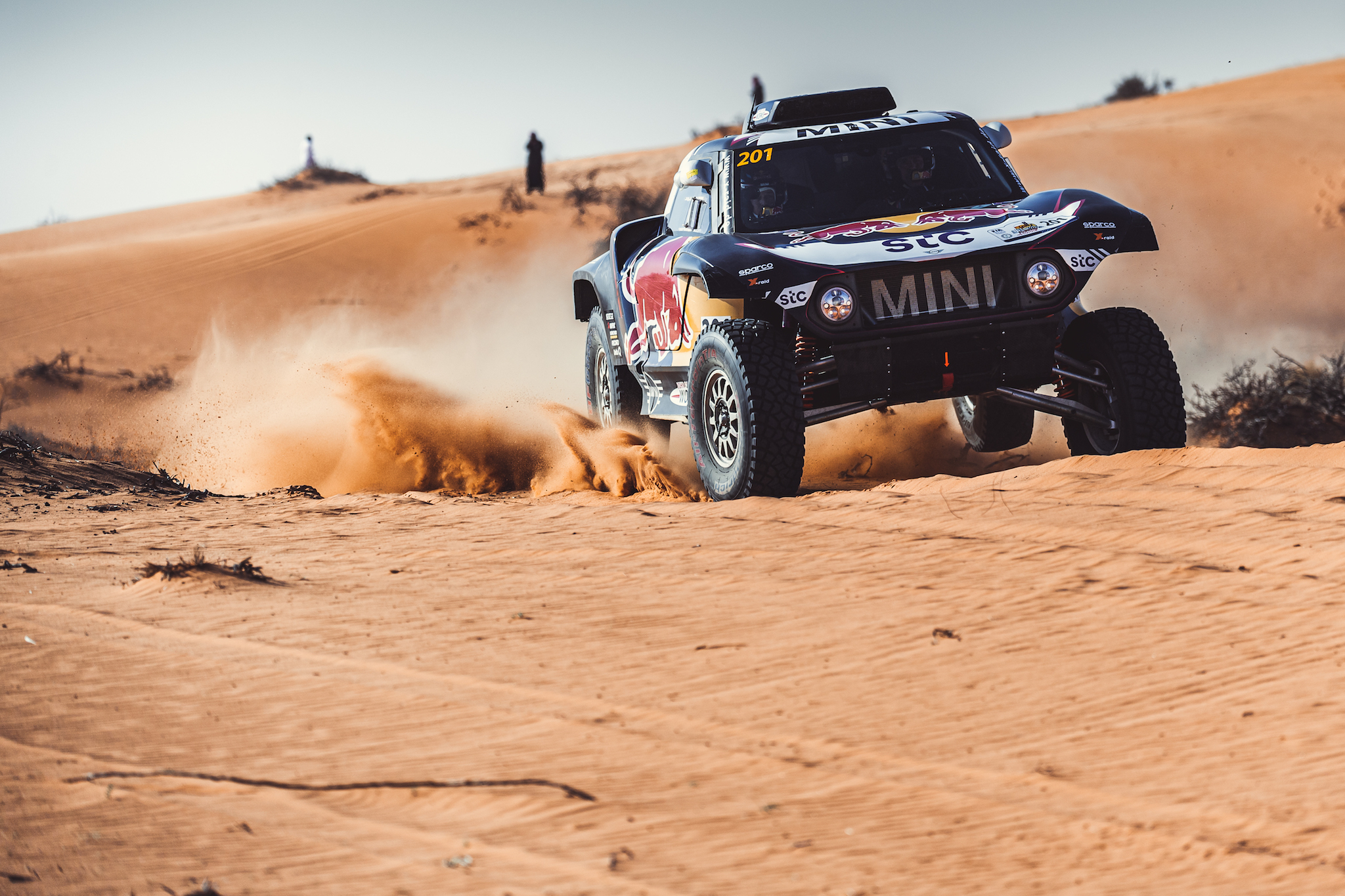Dakar 2021 | Team X-Raid Mini JCW’s Buggy vs Rally vs All4 racing car
A brief look at the X-Raid Mini JCW Buggy, Rally and All4 and how they differ from each other
 X-Raid Mini JCW Buggy
X-Raid Mini JCW BuggyThe X-Raid Mini JCW team’s Dakar rally machines are nothing short of brilliant. The purpose built machines are arguably the world’s best and the toughest rally cars, developed to traverse continents and take on all kinds of tricky terrain. The Buggy is the preferred choice for veterans Stephane Peterhansel and Carlos Sainz while the Rally is piloted by Vladimir Vasilyev, Denis Krotov and Victor Khoroshavsev. The All4 on the other hand is driven by Brazilian rally enthusiast Guiga Spinelli.
X-Raid Mini JCW Buggy
 Buggy
BuggyThe Buggy is the latest addition to the fleet and was introduced to the world in September 2017. It is powered by a three-litre six-cylinder turbocharged BMW engine that puts out 350bhp at 3500rpm and 770Nm of torque at 2150rpm. The engine is mated to a six-speed Xtrac gearbox with an integrated differential. The Buggy is the only car of the three that is rear-wheel drive and that helps it gain a crucial advantage over the AWD cars as it tips scales at about 1585kg, dry, making it the lightest Mini JCW, giving it a significant speed advantage on the straights . Even though there’s no AWD, the Buggy gets an enormous suspension travel of 430mm and bigger 17-inch wheels shod in BF Goodrich R17 rubber, making the Buggy a truly potent machine for the rough stuff. Two spares can be carried along and it also benefits from a tyre-inflation system that can be operated via a switch in the cabin.
Top cars to lookout for in Dakar 2021
X-Raid Mini JCW Rally
 Rally
RallyThe Rally car, launched back in 2016 is the revised version of the All4 and has an updated design based on the newer generation Mini Countryman. The engine on the Rally is the same as the one on the Buggy. So, power and torque outputs are identical. The major difference is that the Rally gets an all-wheel drive system over the Buggy’s RWD. The Rally car also uses a six-speed gearbox but this one is provided by Sadev, while the differential is provided by Xtrac. At 1850kg, the Rally weighs 265kg more mainly due to the AWD system, a larger 365-litre fuel tank and the capacity to load an additional third spare wheel. The suspension travel on the Rally car is considerably lower than on the Buggy at 280mm (150mm less than the buggy), but the AWD system helps the Rally car go faster over the more challenging terrain where grip is of paramount importance (dunes, crests, rocks, etc.) . The Rally also sports higher profile tyres wrapped around 16-inch wheels. According to the drivers, the Rally and the All4 are a lot more precise and stable. One major drawback for the Rally and the All4 are that according to regulations they cannot have an auto inflate/deflate system in the cockpit, so, drivers have to stop and manually set tyre pressures.
X-Raid Mini All4 Racing
 All4 Racing
All4 RacingThe All4 is the oldest car of the three and was introduced back in 2010. The car is powered by a twin-turbo BMW six-cylinder engine that churns out 315bhp at 3250rpm and 800Nm at 2100rpm. Just like the rally, the engine is mated to a six-speed Sadev gearbox and gets an Xtrac differential. The All4 gets AP Racing ventilated front and rear discs. The rear brakes also get water cooling. The All4 is the heaviest car of the three with a dry weight of 1953kg, which is around 400kg more than the newest car in the lot, the RWD Buggy. Some of this weight is also attributed to a higher capacity 385-litre fuel tank. Like the Rally, it gets 16-inch wheels wrapped in BF Goodrich rubber and the ability to store three spare wheels in the car.
Stephane Peterhansel on the Buggy, “First off all, normally, off-road, four-wheel-drive is much better. But we have some differences that help the two-wheel drive. For example, on the two-wheel drive, we are able to use shock-absorbers with a lot more travel. The shock-absorbers are longer than on the four-wheel drive. That means that we can go faster on the track when it’s completely destroyed. To recap the Buggy gets bigger wheels, more travel of the shock absorbers, the lower weight and the inflate system. And at the end, when you drive, the main difference is that the two-wheel drive is higher but it moves more. It’s a little bit like a boat. It’s not really precise, it’s a little bit like a boat. But, at the end it’s faster on the bumpy track.”


